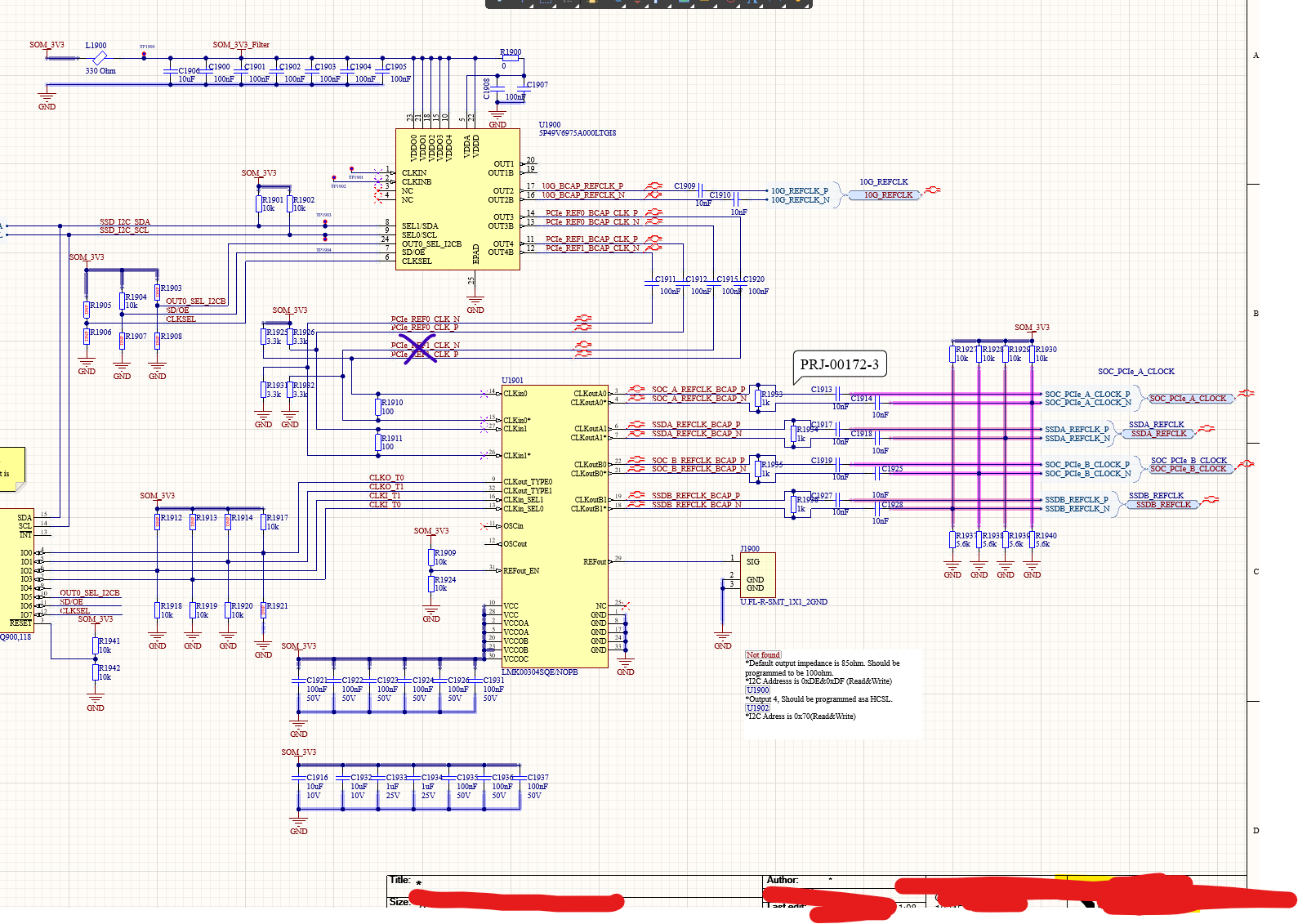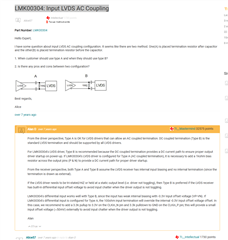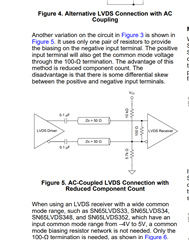Tool/software:
Hello Team,
I’d like to double-check my clock-distribution setup.
I have a single 100 MHz LVDS clock that I need to fan out to several PCIe devices (SSDs, controller, etc.).
-
Reference input: CLKin0, fed with the 100 MHz LVDS signal
-
Outputs: Four channels, each configured for LVDS
The datasheet lists a minimum LVDS frequency of 1 GHz—can you confirm whether that applies to this use case? Also, can you confirm that the device will simply pass the input frequency through, giving four 100 MHz outputs from the 100 MHz input?
Thank you!






